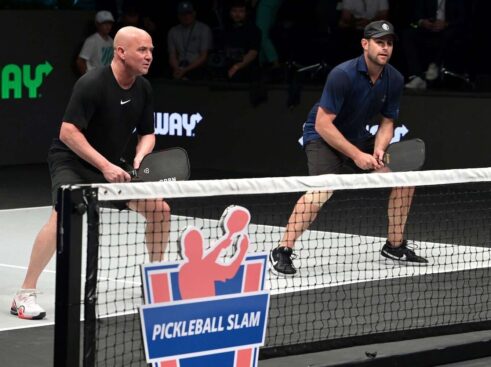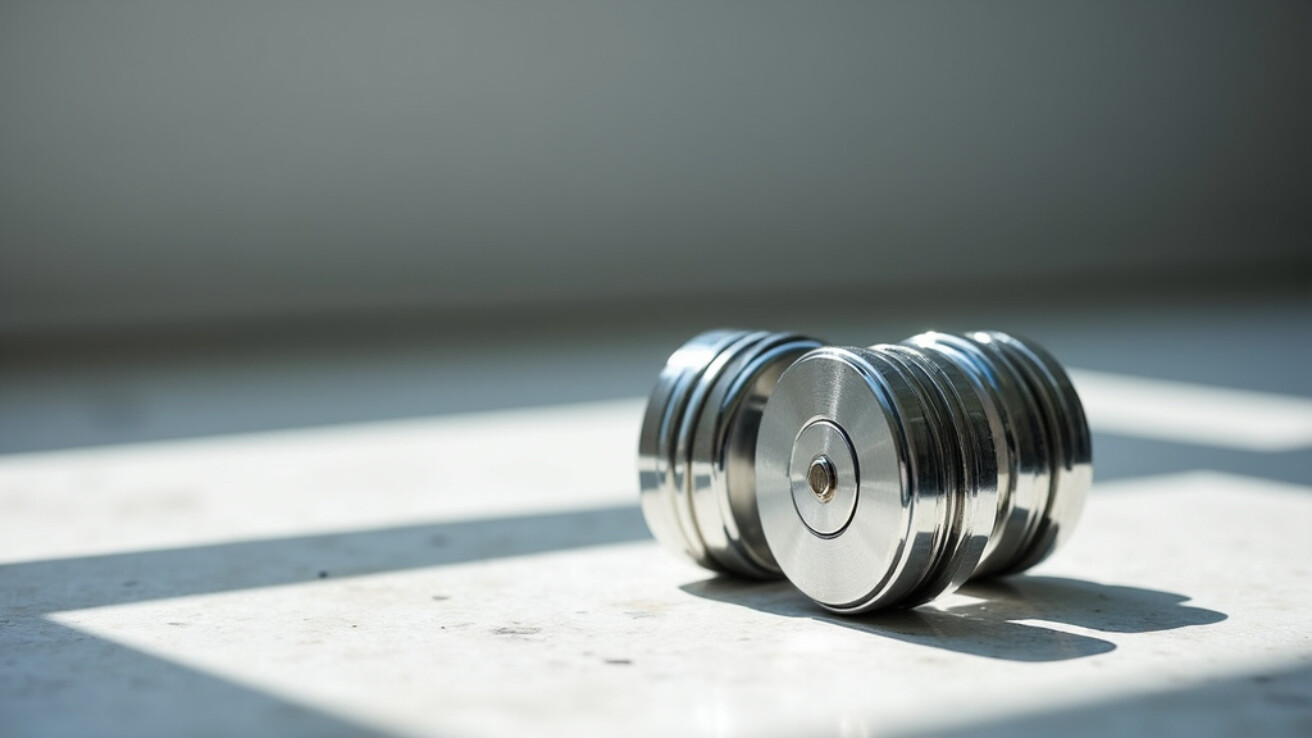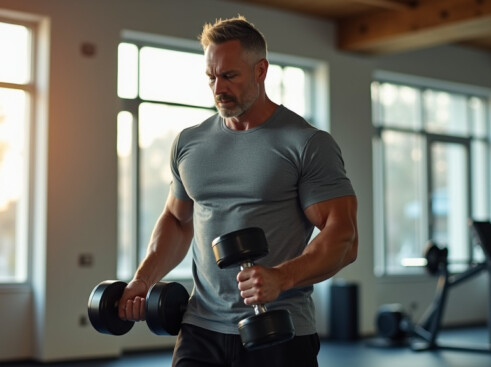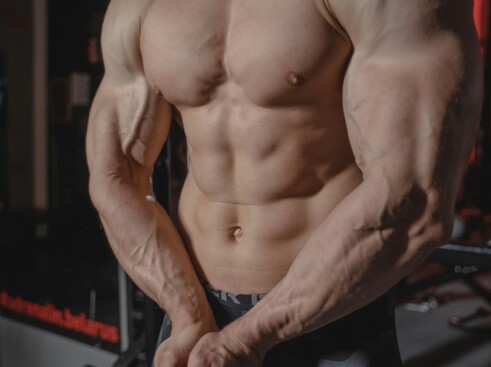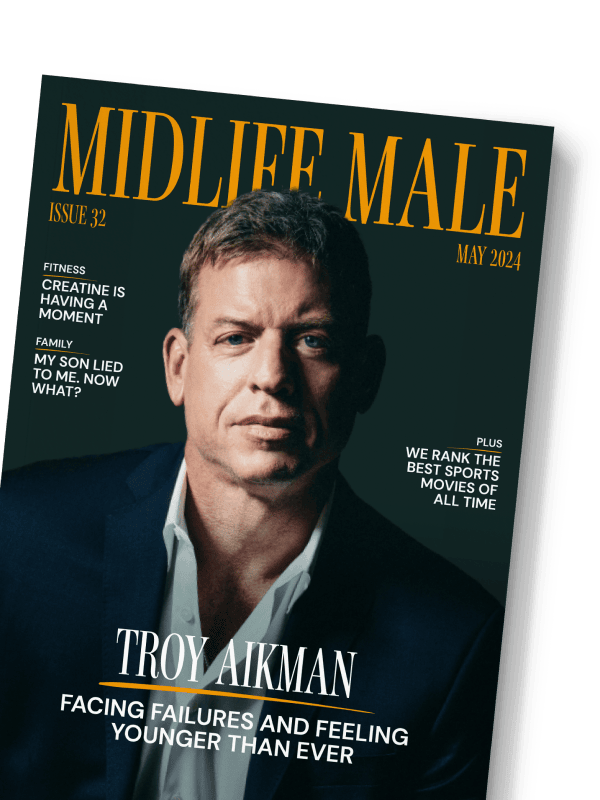Looking to transform your upper body and build head-turning arms? Arm exercises with weights offer one of the most direct paths to achieving impressive strength and muscular definition.
From building defined bicep peaks to sculpting powerful triceps that comprise two-thirds of your arm size, strategic weight training can transform your arms. Experienced lifters consistently demonstrate that effective arm training combines precise technique with proven training principles.
By combining targeted exercises with effective recovery methods, you can develop the arm strength and definition you seek.
Whether you’re aiming to build impressive muscle mass or enhance functional strength for daily activities, this guide will show you how to optimize your arm training. We’ll explore proven exercises while presenting the science in clear, practical terms.
Get ready to learn how strategic arm training can enhance your physique, increase your strength, and boost your confidence. Your transformation begins now.
Essential Equipment for Arm Workouts
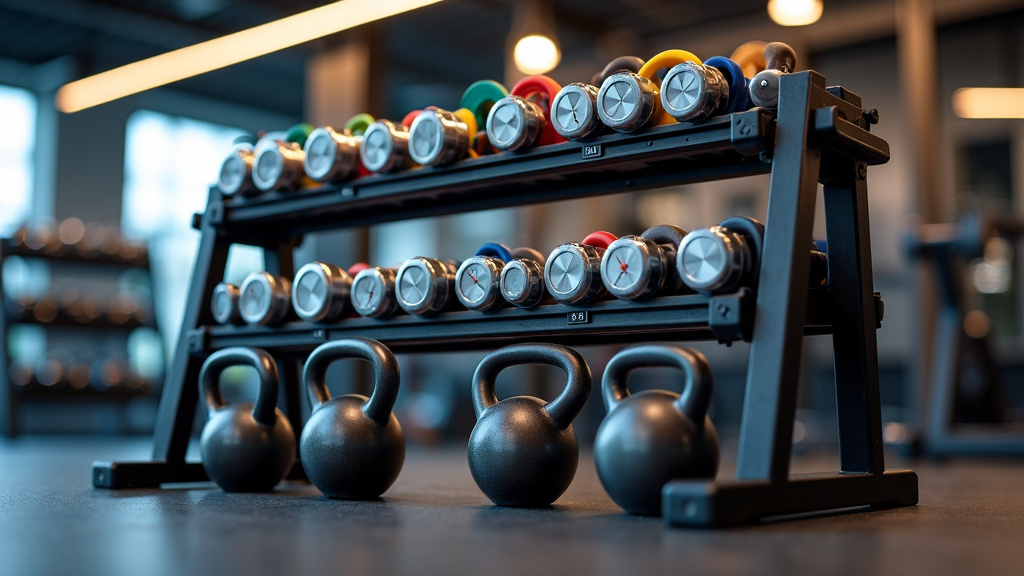
Building strong, defined arms requires more than just motivation – you need the right tools in your arsenal. From traditional dumbbells to versatile resistance bands, each piece of equipment offers unique benefits for sculpting and strengthening your arms.
Let’s explore the essential equipment that will help you achieve your arm training goals effectively and safely. I’ve spent years testing various tools, and these are the proven essentials that deliver results.
Dumbbells: The Foundation of Arm Training
Dumbbells are the gold standard for arm workouts, offering unmatched versatility and effectiveness. These free weights allow you to target specific muscles while developing stabilizer strength.
For beginners, I recommend starting with a set of light dumbbells (5-15 pounds) to master proper form. They’re perfect for foundational exercises like bicep curls and tricep extensions.
When selecting dumbbells, ensure they have a comfortable grip and enough weight variety to progress as you get stronger. Quality matters – look for hex-shaped designs that won’t roll away during your workout.
Resistance Bands: Portable Power
Resistance bands enhance arm training by providing constant tension throughout each movement. They’re versatile and effective for both beginners and advanced users.
What I love about resistance bands is their ability to create smooth, controlled resistance that builds both strength and stability. They’re particularly effective for tricep pushdowns and lateral raises.
Choose bands with different resistance levels – typically light (10-15 pounds), medium (20-25 pounds), and heavy (30+ pounds) – to accommodate various exercises and progression levels.
| Band Color | Resistance Level | Recommended Exercises |
|---|---|---|
| Yellow | Light | Shoulders, Shins |
| Green | Medium | Biceps, Triceps |
| Red | Medium to Heavy | Legs, Chest, Back |
| Blue | Medium to Heavy | Legs, Chest, Back |
| Black | Heavy | Legs, Large Muscle Groups |
| Silver/Gold | Most Heavy | Legs, Back, Chest |
Kettlebells: Dynamic Arm Development
Kettlebells introduce an element of dynamic training that traditional dumbbells can’t match. Their unique center of gravity challenges your arms in new ways, leading to improved functional strength.
For arm-specific training, start with a lighter kettlebell (15-25 pounds) to master fundamental movements. The offset weight distribution requires extra stabilization, engaging more muscle fibers.
Safety is crucial with kettlebells – always maintain proper form and control throughout each movement. These tools excel at building grip strength while targeting multiple muscle groups simultaneously.
Proper Form and Grip Guidelines
Regardless of which equipment you choose, maintaining proper form is essential for preventing injury and maximizing results. Keep your core engaged and avoid swinging or using momentum during exercises.
When gripping any implement, ensure your wrist remains neutral and your grip is firm but not white-knuckled. This approach reduces strain while maintaining control throughout each movement.
Remember to start lighter than you think necessary and focus on perfect form before increasing weight or resistance. This patient approach builds a strong foundation for long-term progress.
Bicep-Building Exercises
Building strong, well-defined biceps requires more than just mindlessly curling weights. As someone who’s spent years perfecting these movements, I’ve learned that proper form and strategic progression are the real keys to success.
These three cornerstone exercises have consistently proven their worth in developing impressive arm definition and strength. Each movement targets the biceps from slightly different angles for comprehensive development.
Master these techniques to maximize your bicep training, whether you’re just starting out or looking to break through a plateau.
Standard Bicep Curls
The classic bicep curl forms the foundation of any serious arm-building routine. Select dumbbells you can lift with perfect form for 8-12 repetitions, ensuring the final few reps challenge your muscles significantly.
Keep your elbows fixed at your sides throughout the movement – this isn’t the time for swinging or using momentum. Focus on a controlled lift and an even slower lowering phase to maximize muscle engagement.
For optimal results, perform 3-4 sets of 8-12 reps. Once you can complete all sets with good form, consider increasing the weight by 2-5 pounds during your next workout.
Hammer Curls
Hammer curls uniquely target both the biceps and the often-overlooked brachioradialis muscle. Start with your palms facing each other, maintaining this neutral grip throughout the movement.
The hammer curl variation reduces stress on your wrists and elbows while building impressive forearm strength. Perform these with the same attention to controlled movement as standard curls.
Begin with 3 sets of 10-12 reps per arm. As your strength improves, you can progress to heavier weights or additional sets to continue challenging your muscles.
Concentration Curls
Concentration curls excel at isolating the biceps, making them perfect for developing peak contraction and detailed definition. Sit on a bench with your elbow braced against your inner thigh for stability.
This position eliminates the possibility of using momentum, forcing your biceps to do all the work. Focus on squeezing your bicep at the top of each repetition for maximum engagement.
Start with 2-3 sets of 12-15 reps per arm. The isolation nature of this exercise typically requires lighter weights than standard curls, but don’t let that fool you – the targeted stress on your biceps is intense.
| Exercise | Muscle Activation | Additional Muscles Involved | Notes |
|---|---|---|---|
| Concentration Curl | High | Low AD and BR | Isolates biceps effectively |
| Incline Curl | Moderate | Low BR | Less effective on BR compared to EZ curl |
| Preacher Curl | Moderate | Low BR | Less effective on BR compared to EZ curl |
| EZ Curl (Narrow Grip) | Moderate | High BR | Engages BR significantly |
Tricep-Toning Techniques
Your triceps deserve special attention when building impressive arms. These three-headed muscles comprise about two-thirds of your upper arm mass, making them crucial for both strength and aesthetics.
While many focus solely on bicep curls, developing your triceps is essential for balanced arm development. Strong triceps enhance your pressing power and create that coveted horseshoe shape along the back of your arm.
Let’s explore the most effective exercises to target these powerful muscles.
Overhead Cable Triceps Extensions
Research shows that overhead movements are particularly effective for tricep development. In one study, overhead extensions produced nearly 20% more muscle growth compared to standard pushdowns.
Start with your arms elevated and elbows next to your ears, keeping the weight behind your head. Focus on a controlled motion as you extend your arms, feeling the stretch in your triceps.
This movement specifically targets the long head of the triceps, which comprises about 50% of the muscle’s overall volume.
Diamond Push-Ups
This bodyweight exercise effectively targets your triceps while engaging your core and chest muscles. Position your hands close together under your chest, forming a diamond shape with your thumbs and index fingers.
As you lower your body, keep your elbows tucked close to your sides. This positioning shifts more emphasis onto your triceps compared to traditional push-ups.
For beginners, you can modify this exercise by performing it from your knees while maintaining proper form.
Tricep Rope Pushdowns
The rope attachment provides a unique advantage in this classic exercise. Unlike a straight bar, you can split the ends of the rope at the bottom of the movement to intensify the peak contraction.
Stand with your elbows tucked at your sides and focus on pushing the weight down using just your forearms. Maintain control throughout the movement to maximize muscle engagement.
This exercise effectively targets both the lateral and medial heads of your triceps while providing constant tension throughout the movement.
Programming Your Tricep Training
For optimal results, train your triceps 2-3 times per week, allowing adequate recovery between sessions. Research indicates that 10-20 working sets per week produces the best results for muscle growth.
Start with heavier compound movements like close-grip bench presses or dips, then progress to isolation exercises. Keep your rep ranges between 8-15 for most exercises to balance muscle growth and strength development.
Remember that proper form is crucial – rushing through movements or using momentum will reduce the effectiveness of your training.
The triceps are a super, super important muscle group. They stabilize your arms and your shoulders. They also help increase range of motion.
Jacqueline Kasen, CPT
Exercise Comparison
To give you a clearer understanding of how different exercises target your triceps, here is a table that summarizes the primary muscle focus and benefits of each movement.
| Exercise | Targeted Muscle Areas |
|---|---|
| Triceps Pressdown | Lateral head |
| Close-Grip Pushup | Triceps overall |
| Bench Dips | Triceps overall |
| Close-Grip Bench Press | Triceps overall |
| EZ Bar Skull Crushers | Long head |
| Rocker Bodyweight Skull Crusher | Long head |
| Bench Overhead Triceps Extension | Long head |
| JM Press | Triceps overall |
| Bodyweight Triceps Extension | Long head |
| Dumbbell Bench Press | Triceps overall |
| Tall Kneeling Triceps Pressdowns | Lateral head |
| Half-Bench Skull Crusher | Long head |
| Triceps Kickback | Lateral head |
| Cable Triceps Kickback | Lateral head |
| TRX Tricep Extension | Triceps overall |
Shoulder-Shaping Strategies
Building strong, well-defined shoulders isn’t just about aesthetics – it’s essential for everyday movements and overall upper body function. The deltoid muscles, which cap your shoulders, consist of three crucial parts: anterior (front), lateral (middle), and posterior (rear) heads.
Whether you’re reaching overhead to grab something from a high shelf or pushing open a heavy door, your deltoids play a vital role in these daily activities. Let’s explore the most effective exercises to develop these important muscles.
Many people make the mistake of focusing solely on pressing movements, neglecting complete shoulder development. A balanced approach incorporating various movement patterns is key for both function and aesthetics.
Mastering the Lateral Raise
The lateral raise is one of the most effective exercises for targeting the middle deltoid head. Start with lighter weights than you might expect – this is an isolation exercise where form trumps weight.
Stand with feet shoulder-width apart, holding dumbbells at your sides with a slight bend in your elbows. Keep your core engaged and shoulders neutral – don’t shrug them up toward your ears.
As you raise the weights, work in what’s called the scapular plane
– about 20-30 degrees in front of your torso. This positioning helps protect your rotator cuff tendons while maximizing muscle activation.
Control is crucial here – avoid swinging or using momentum.
Lift until your arms reach just below shoulder height, then slowly lower back down. Maintain that slight bend in your elbows throughout the movement.
Perfect Your Shoulder Press
The shoulder press is a foundational exercise for building overall deltoid strength and mass. Whether seated or standing, proper form is essential for both effectiveness and safety.
Begin with dumbbells at shoulder height, palms facing forward. Keep your core tight and avoid arching your back – this is about quality movement rather than maximum weight.
Press the weights overhead while keeping your shoulders down and back. Keep your elbows in line with your wrists throughout the movement to prevent excessive flaring.
Lower the weights with control, stopping at shoulder level. This maintains constant tension on the deltoids and prevents unnecessary stress on your joints.
Keep your neck neutral and avoid jutting your chin forward. This common mistake can lead to strain and reduced muscle activation.
Safety and Form Considerations
When it comes to shoulder training, patience and proper form are paramount. Start with lighter weights to master the movement patterns before progressing to heavier loads.
Maintain control throughout each exercise – if you find yourself using momentum or swinging the weights, that’s a clear sign to reduce the weight. Quality repetitions always trump quantity.
Pay attention to any unusual pain or discomfort. While muscle fatigue is normal, sharp or shooting pain could indicate improper form or potential injury.
Consider incorporating a proper warm-up routine focusing on shoulder mobility and rotator cuff activation before jumping into your working sets. This helps prevent injury and improves overall performance.
Remember that shoulder development takes time and consistency. Focus on gradual progression and maintain proper form for the best long-term results.
Creating an Effective Arm Workout Routine
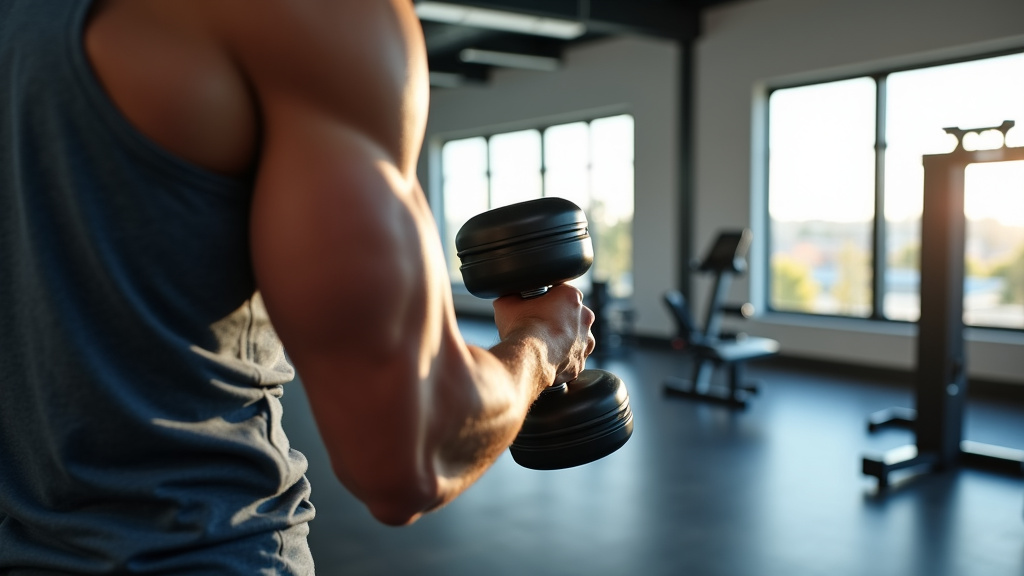
Designing an effective arm workout routine requires more than just endless sets of bicep curls. Based on my experience working with clients, the most successful approach combines strategic exercise selection, proper training frequency, and systematic progression.
Let’s dispel a common misconception right away – training arms every day isn’t the answer. Research shows that muscles need adequate recovery time between sessions, with 2-3 arm workouts per week being optimal for most people.
I’ve found that spacing these workouts at least 48 hours apart allows for proper muscle recovery while maintaining consistent growth stimulus.
Exercise Selection and Structure
A well-rounded arm routine should target all major muscle groups – biceps, triceps, and forearms. The triceps comprise about two-thirds of your upper arm mass, so they deserve special attention.
Start with compound movements like dumbbell curls and overhead extensions, which research shows establish the foundation for arm development. These exercises enable natural movement patterns while effectively targeting the intended muscles.
For optimal results, structure your workout with 3 sets of 10-12 repetitions per exercise. The last few reps should feel challenging but manageable while maintaining proper form.
Progressive Overload and Training Intensity
Progressive overload is crucial for continuous improvement. This doesn’t always mean adding more weight – you can progress by increasing repetitions, sets, or improving form.
For beginners, I recommend starting with lighter weights to master proper form. The weight is appropriate when you can complete all sets with good technique while feeling fatigued by the final repetitions.
Monitor your progress by tracking your workouts. When you can easily complete all prescribed sets and reps, it’s time to increase the challenge.
| Week | Monday | Wednesday | Friday | Saturday |
|---|---|---|---|---|
| 1 | Chest and Back | Legs and Abs | Biceps and Triceps | Shoulders and Arms |
| 2 | Chest and Back | Legs and Shoulders | Chest and Triceps | Back and Biceps |
Recovery and Sustainability
Effective recovery is just as important as the workout itself. Listen to your body – persistent soreness or decreased strength indicate you may need more rest between sessions.
Stay hydrated and ensure adequate protein intake to support muscle recovery. Quality sleep also plays a crucial role in muscle growth and repair.
Remember that consistency trumps intensity. It’s better to maintain a sustainable routine than to overdo it and risk injury or burnout.
Nutrition and Recovery for Arm Development
Building impressive arms requires more than just pumping iron – proper nutrition and recovery are essential components that determine your results. Research shows that muscle growth occurs not during training, but in the critical recovery period when your body repairs and rebuilds tissue.
Protein intake plays a pivotal role in arm development. Studies indicate that beginners should consume 1.5 grams of protein per pound of bodyweight daily during the first six months of training, when muscles respond most rapidly to exercise stimulus.
Strategic carbohydrate timing significantly impacts arm-building progress. Muscles optimally absorb nutrients within a 2-hour post-workout window, making this an ideal time to consume 20-30% of your daily carb intake alongside 25-50 grams of quality protein.
| Time of Day | Recommended Nutrient Intake | Purpose |
|---|---|---|
| Pre-Workout (60-150 min before) | High-carb, moderate protein meal | Enhance performance and energy levels |
| Post-Workout (within 30 min) | 1.0-1.5g of carbohydrates per kg of body weight | Replenish glycogen stores |
| Throughout the Day | Evenly spaced protein intake (20-40g every 3-4 hours) | Maximize muscle protein synthesis |
| Pre-Sleep | 30-40g of casein protein | Support overnight muscle recovery |
Recovery Through Rest and Sleep
Quality sleep serves as the foundation for muscle recovery and growth. Research demonstrates that sleep deprivation impairs muscle recovery by disrupting your body’s inflammatory response and hormone production – both essential for building bigger arms.
For optimal results, aim for 7-9 hours of sleep nightly. During deep sleep, your body releases peak levels of growth hormone and testosterone, which drive muscle development and repair.
Active recovery techniques accelerate progress between arm workouts. Light activities like swimming or cycling maintain blood flow while allowing muscles to repair.
Advanced Recovery Methods
Implementing targeted recovery strategies enhances arm development. Studies have shown that consuming BCAAs between meals helps maintain protein synthesis throughout the day.
Foam rolling serves as an effective recovery tool. When performed after arm workouts, it helps remove lactic acid and reduce muscle adhesions that could limit growth and function.
Cold therapy, particularly brief ice bath immersion, reduces inflammation and accelerates recovery after intense arm training. A 10-minute session in water between 50-59°F provides optimal benefits.
Remember that recovery is an active process requiring proper nutrition, adequate sleep, and strategic techniques to optimize your arm development. Focus on these fundamentals to maximize your training efforts.
Common Mistakes and How to Avoid Them
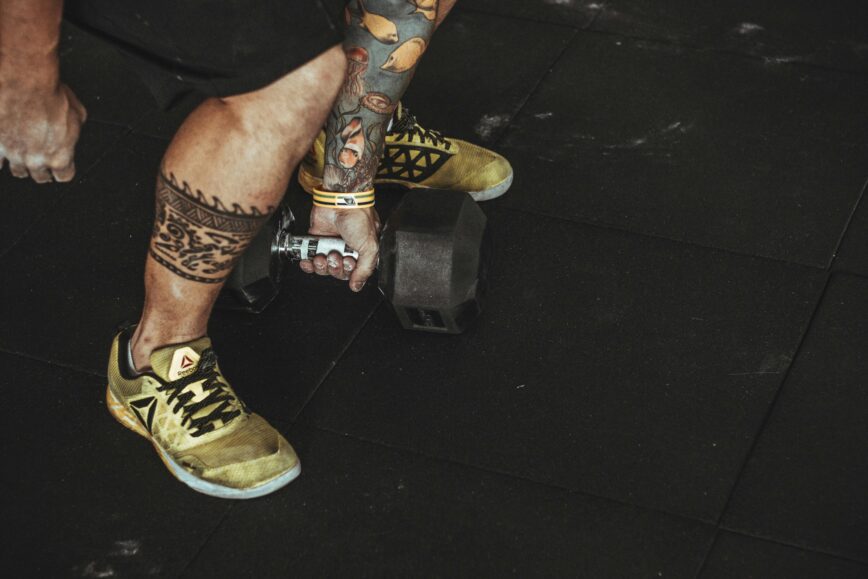
Building impressive arms requires more than just lifting weights – many lifters unknowingly make crucial mistakes that limit their biceps and triceps development. Here are the most common pitfalls and how to correct them for maximum gains.
Poor Form and Momentum
One of the biggest mistakes in arm training is swinging weights and relying on momentum to complete repetitions. This reduces muscle activation and shifts the load away from the targeted muscles, limiting your results.
To fix this, focus on controlling each repetition with proper tempo. Research shows that slowing down the lowering phase to 2-3 seconds while taking 1-2 seconds on the lifting phase leads to greater muscle activation and growth.
Keep your elbows stationary during bicep curls and avoid swinging the weights. For tricep exercises, maintain your elbows close to your sides rather than flaring them out.
Consider reducing the weight if needed to maintain proper form. As one experienced trainer notes, You can get strong without growing your arms. I’ve seen plenty of people curling 15-pound dumbbells who have jacked arms – because they focus on proper form and tension
.
Remember that cheating through repetitions limits muscle tension and reduces time under tension, both crucial factors for muscle growth.
Overtraining and Recovery Issues
Many enthusiasts believe training arms every day leads to faster growth. However, this approach often results in overtraining, which can hinder muscle recovery and progress.
Research indicates that muscles require adequate recovery time between training sessions. Training arms 2-3 times per week allows optimal stimulation while preventing burnout.
Instead of dedicating entire days to arms, incorporate biceps and triceps exercises into your upper body training sessions throughout the week. This provides consistent stimulus without overwhelming the muscles.
Listen to your body and allow at least 48 hours between arm training sessions to optimize recovery and growth potential.
Neglecting Compound Movements
Many lifters focus solely on isolation exercises like bicep curls and triceps extensions, missing out on the benefits of compound movements. This limits overall arm development and strength gains.
Include exercises like close-grip bench presses, chin-ups, and dips in your routine. These movements engage multiple muscle groups and stimulate greater hormonal responses for muscle growth.
Research by Stastny shows that multi-joint exercises lead to greater muscle activation and hypertrophy than isolation exercises alone. Start your arm workouts with compound movements before moving to isolation work.
Remember that the triceps make up approximately two-thirds of your upper arm mass. Give them adequate attention through both compound and isolation exercises.
| Training Level | Frequency (per week) | Rest Days |
|---|---|---|
| Beginners | 2-3 days | At least 1 day between sessions |
| Intermediate | 3-5 days | 1-2 days, based on intensity |
| Advanced | 4-6 days | 1-2 days, based on recovery |
By addressing these common mistakes and implementing the corrections, you’ll be on track to build stronger, more impressive arms while reducing your risk of injury.
Conclusion: Embracing Your Arm Transformation Journey
Success comes from intentional workouts with proper form and strategic recovery periods between sessions.
Your dedication to consistent training will yield results as you work through these proven exercises. Muscle development is a gradual process – maintain a routine of 2-3 arm workouts weekly while respecting your body’s recovery signals.
Building impressive arm definition combines proper form, targeted exercise selection, and sound nutrition. Focus on controlled movements that effectively engage both biceps and triceps, maintaining a strong mind-muscle connection throughout each exercise.
Developing stronger, more sculpted arms requires sustained dedication. Celebrate your progress milestones, from perfecting form to increasing weight loads. Your investment in this journey delivers benefits well beyond improved aesthetics.


